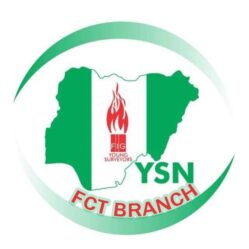Hello, Surveyors! Last week, we discussed the essential Safety Protocols for Surveying. This week, we’re exploring real-life scenarios from the field using case studies from Nigeria. These examples will help us understand how safety protocols are applied in practice and, more importantly, what happens when overlooked.
Each of these scenarios will highlight specific risks Surveyors face in Nigeria and how they can be mitigated with proper safety measures. Let’s explore these real-world examples to reinforce the importance of safety in our day-to-day surveying work.
Scenario 1: Power Line Hazard in an Urban Area
Case Study: Lagos, Nigeria
A surveying team was tasked with measuring land near a major Lagos road. During the project, one of the Surveyors moved too close to a high-voltage power line while setting Cup equipment, unaware of the electrical hazard overhead. Fortunately, the team lead noticed the danger and immediately instructed everyone to stop work and move to a safe distance. A site assessment was then conducted to identify safer work zones. Now, the Recce should have been carried out even before the project started.
Safety Lesson:
Surveying in urban areas often involves working near utility lines. A proper site assessment before starting the project could have identified this hazard early. Teams should always be aware of their surroundings and avoid working directly under power lines. Additionally, using insulated tools or surveying equipment could further reduce the risk of electrocution.
Scenario 2: Equipment Failure in a Remote Area
Case Study: Rural Surveying in Kaduna State
A team conducting boundary measurements in a remote part of Kaduna encountered a major issue when their total station malfunctioned mid-project. They were far from any repair facilities and had no backup equipment. The breakdown caused significant delays and left the team vulnerable to environmental hazards such as intense heat and the threat of wildlife.
Safety Lesson:
Always inspect equipment before heading into the field, especially in remote areas where repairs are difficult. Having backup equipment or spare parts is essential for minimizing downtime and ensuring that the team is not left in a risky situation. Additionally, Surveyors should prepare for environmental challenges, like extreme heat, by carrying enough water, wearing sun protection, and establishing a base camp for breaks.
Scenario 3: Poor Communication in a Crowded Market Area
Case Study: Surveying in Balogun Market, Lagos
In a busy area like Balogun Market, a surveying crew was working on a land boundary project. The site was crowded with people and vehicles, making it difficult to communicate. As a result, one Surveyor was almost struck by a reversing vehicle because no warning was given by their team members. Luckily, they were unharmed, but the close call was a stark reminder of the importance of coordination.
Safety Lesson:
In busy, high-traffic environments, effective communication is vital to prevent accidents. Survey teams should establish clear hand signals, radio communication, or a designated lookout to coordinate movements and ensure that everyone is aware of potential dangers, such as nearby vehicles or pedestrians. Always work with high-visibility clothing and consider using barriers to mark out survey areas.
Scenario 4: Natural Disasters and Emergency Preparedness
Case Study: Flooded Survey Site in Benue State
During the rainy season, a survey crew in Benue was working on a floodplain mapping project. Heavy rains caused sudden flooding, trapping some of the crew and damaging equipment. Thankfully, emergency protocols were in place, and the team was able to evacuate to higher ground safely, but the equipment was lost, and the project was delayed.
Safety Lesson:
In regions prone to flooding or other natural disasters, Surveyors must be prepared for sudden environmental changes. Always monitor weather forecasts before starting work, and have an emergency evacuation plan in place. Know the safest routes out of the area and ensure all team members are familiar with these procedures. Additionally, equipment should be stored safely or quickly retrieved in case of an emergency.
Scenario 5: Road Traffic Risks
Case Study: Roadside Surveying in Abuja
A team of Surveyors was conducting a roadside survey on one of Abuja’s highways. Despite wearing reflective vests, one team member narrowly avoided being hit by a speeding vehicle. The team had not placed adequate warning signs or cones to alert drivers to their presence, leading to a dangerous situation.
Safety Lesson:
When working near busy roads, placing safety barriers, cones, and clear signage is non-negotiable. Surveyors should also be highly visible, with reflective vests and helmets, especially in low-visibility conditions like early mornings or late evenings. A designated safety officer should be responsible for monitoring traffic and ensuring the crew remains at a safe distance from vehicles.
These real-life scenarios show just how important it is to follow safety protocols in the field. From busy urban environments to remote rural areas, each survey site presents unique risks that can be mitigated with proper planning, communication, and the right equipment.
➡Which of these case studies resonated most with you? Have you encountered something similar?
➡What additional safety measures do you think could have prevented the incidents mentioned?
➡How can we, as Surveyors, advocate for better safety standards within our organizations and teams?
To learn more, you can visit some of these links.
https://www.fdot.gov/docs/default-source/geospatial/documentsandpubs/surveysafetyhandbook.pdf
https://www.secoprecision.com/post/surveyor-safety-is-job-1
Next week, we’ll go even deeper into safety by discussing emergency response procedures and how to develop an effective safety plan for your team. Make sure to join us as we continue learning how to keep ourselves and our teams safe in the field!
Written By: Surv. Angela Omamuyovwi ANYAKORA, MNIS
Head: Education Committee YSN-FCT



I will like to join the program